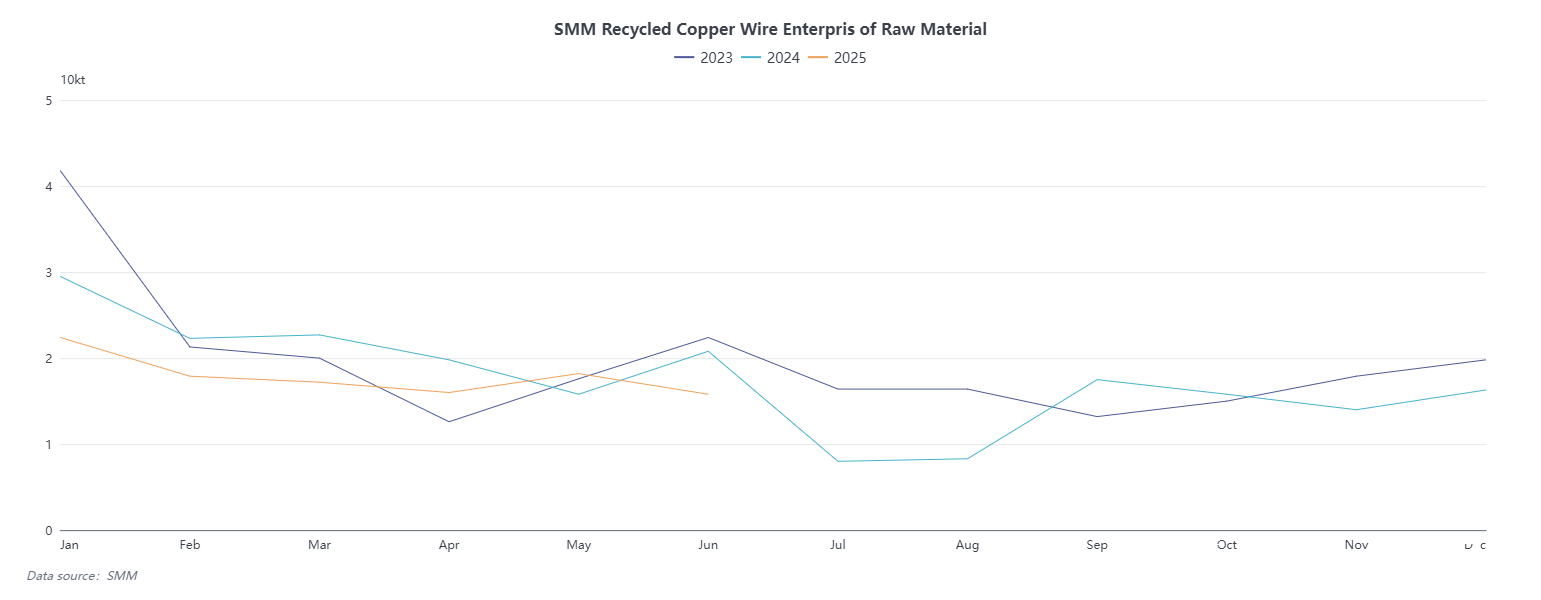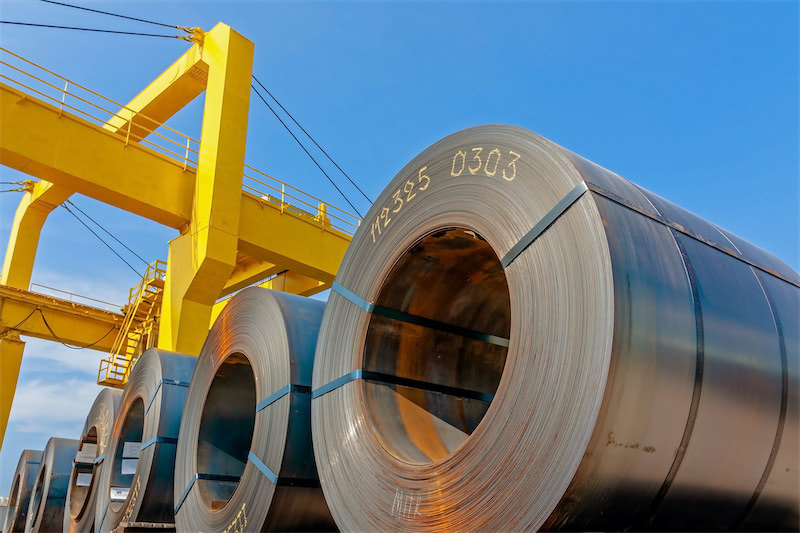






In June, the operating rate of secondary copper rod plants was 33.61%, higher than the expected 30.84%, up 3.69% MoM and down 8.44% YoY. The main theme surrounding secondary copper rod enterprises in June remained sales losses. According to SMM's statistical data from the gross profit theoretical model for secondary copper rod sales, secondary copper rod enterprises incurred an average sales loss of 410 yuan/mt in June, an increase of 165 yuan/mt MoM. The reason for this was that secondary copper rod enterprises, as the production and processing link in the industry chain, faced persistent tight supply of secondary copper raw materials. Imports of secondary copper raw materials fell by 9.55% MoM in May. Domestically, leaders of cargo yards in major distribution centers for secondary copper raw materials in China, such as Foshan, Guangdong, and Linyi, Shandong, indicated that the conventional inventory levels of secondary copper raw materials this year were only 50% of those in previous years (Reference: Assuming that the cargo yard warehouse is fully stocked with secondary copper raw materials at 100%, the current inventory level is merely 20%-30%). Therefore, secondary copper raw material prices mostly followed copper price increases in June. When prices fell, suppliers still refused to budge on prices or halted shipments, resulting in artificially high secondary copper raw material prices. In terms of consumption, June and July are traditionally the off-season in China. The operating rate of downstream wire and cable enterprises fell by 8.97% MoM in June. Weak end-use consumption prevented secondary copper rod enterprises from passing on the increased costs of raw material procurement to wire and cable enterprises. To ensure operations and control finished product inventories, secondary copper rod enterprises could only absorb most of the sales losses themselves. However, the operating rate of secondary copper rod plants rose against the trend due to the temporary suspension of external purchases of anode plates by domestic smelters starting from mid-to-late June for mid-year inventory checks. As a result, many secondary copper rod plants had to switch production lines back to producing secondary copper rods. According to SMM's survey, the finished product inventories of monthly sample enterprises for secondary copper rods were 15,300 mt, down 2,900 mt MoM. The average price spread between primary metal and scrap for copper rods was 1,193 yuan/mt in June, up 43 yuan/mt MoM. The slight expansion of the price spread between primary metal and scrap did not stimulate secondary copper rod consumption. The rise in copper prices near month-end further suppressed end-use consumption. Secondary copper rod enterprises indicated that orders were more inclined towards traders. In summary, due to the persistent shortage of raw materials and the off-season in consumption, if secondary copper rod enterprises cannot convert their production capacity to anode plates, the number of operating days per week will further decrease from 4-5 days to 3 days. Regarding the implementation progress of "reverse invoicing," currently, Sichuan, Hubei, Hunan, Anhui, and Jiangsu have all actively and comprehensively promoted the "reverse invoicing" work. Secondary copper rod enterprises have responded positively to the government and tax bureau's calls. However, during the implementation process, enterprises still need time to adapt and handle the relevant procedures. Given the current tight supply of secondary copper raw materials, the short-term policy implementation has relatively small impact on the production of secondary copper rod enterprises.


For queries, please contact Lemon Zhao at lemonzhao@smm.cn
For more information on how to access our research reports, please email service.en@smm.cn

